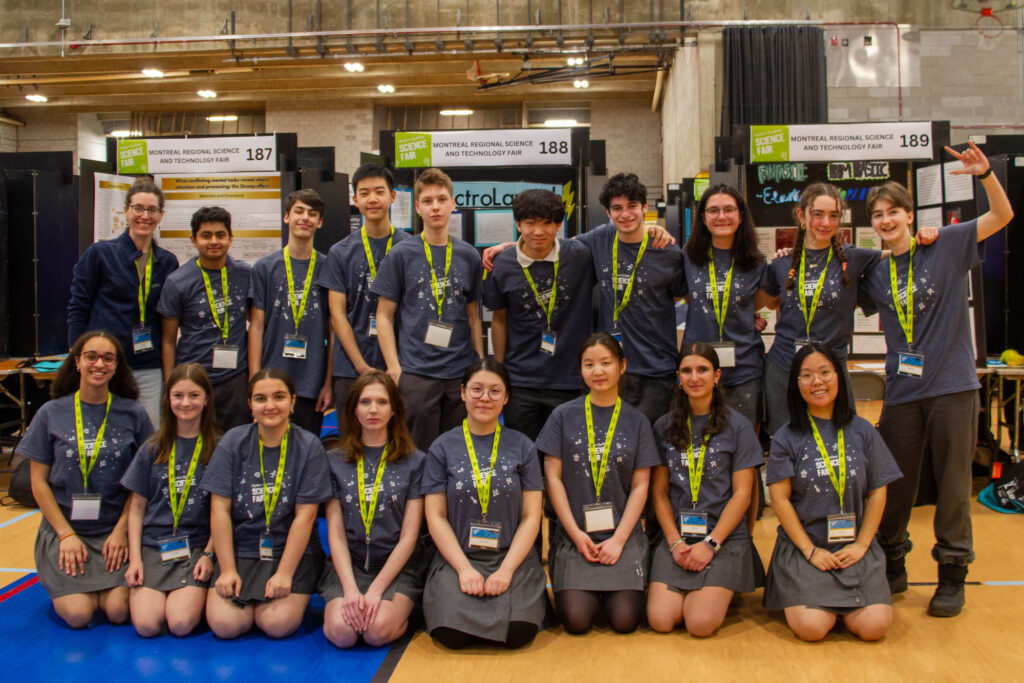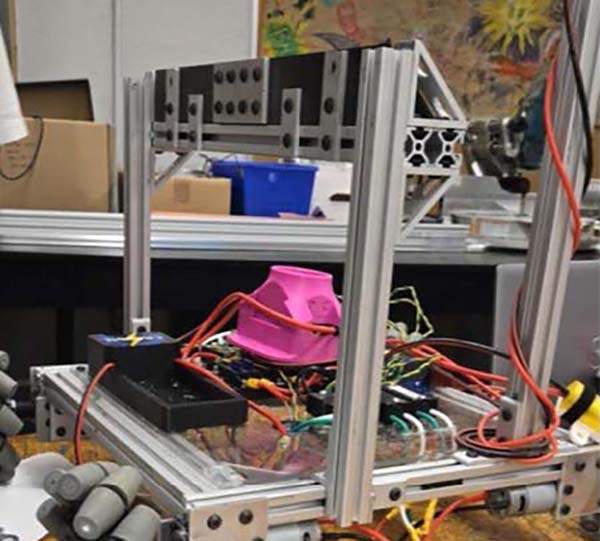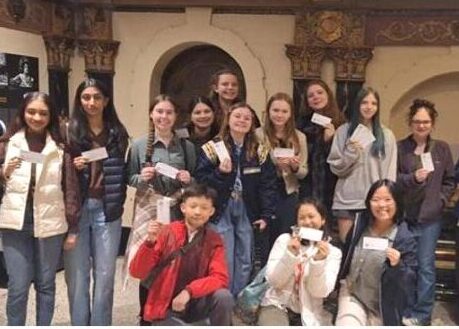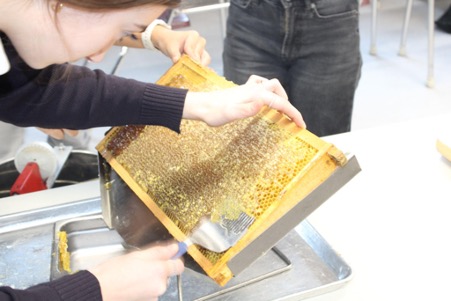The Montreal Regional Science & Technology Fair took place from March 23–25, 2025, at Pierrefonds Community High School.
The Montreal Regional Science & Technology Fair is a program under the non-profit organization, the Educational Alliance for Science & Technology, and a partner of the Réseau Technoscience network.
This year Royal West Academy was the only school representing the EMSB at the Montreal Regional Science fair.
Our local fair held on February 18th, 2025, had 330 participants from grade 8 to 11. Royal West Academy has always believed that all students should participate in the science fair process at least once in their high school years. This process fosters critical thinking, problem solving skills and creativity. This hands-on approach helps students move beyond just memorizing facts to truly understanding how science works in practice. This year 9 teams represented RWA. They are all students who volunteered to participate. Their projects were on a range of subjects.
Project: Fantastic Bombastic Elastic Bioplastic
By: Clara Atallah and Bella Flanz – Grade 8
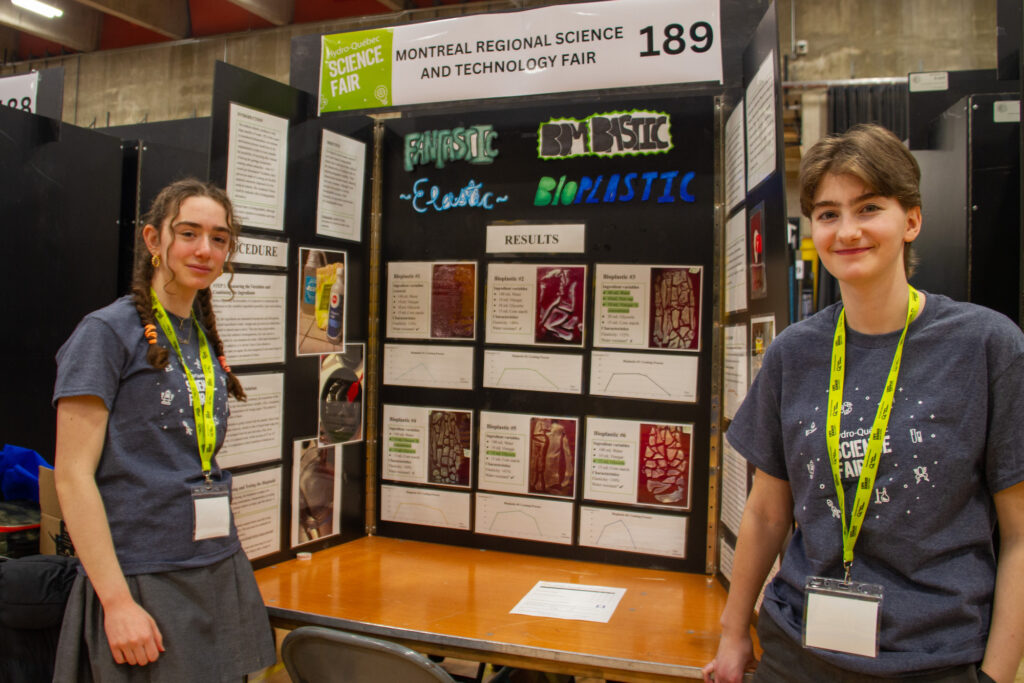
The objective of our experiment was to emulate the physical characteristics of synthetic latex such as texture, elasticity and water resistance by adjusting certain variables from an initial corn starch-based recipe composed of biodegradable ingredients.
We were wondering what happened to the synthetic latex gloves the doctors use daily. We found out that these, along with all other biohazardous medical waste, get incinerated through a process called autoclaving. This expels carbon emissions. Thus, we opted to create a biodegradable alternative in the form of bioplastic.
Although we tested the bioplastics’ elasticity and water resistance, we would have liked to execute more tests to broaden their potential application. These could include observing its reaction to bodily substances it would be exposed to in a medical setting and testing its ability to biodegrade. Ultimately, we hope that our project can serve as inspiration for others with a passion for finding practical alternatives to the benefit of the environment!
Project: Probiotics
By: Qianyu Wang and Anna Maria Romanishyna – Grade 11
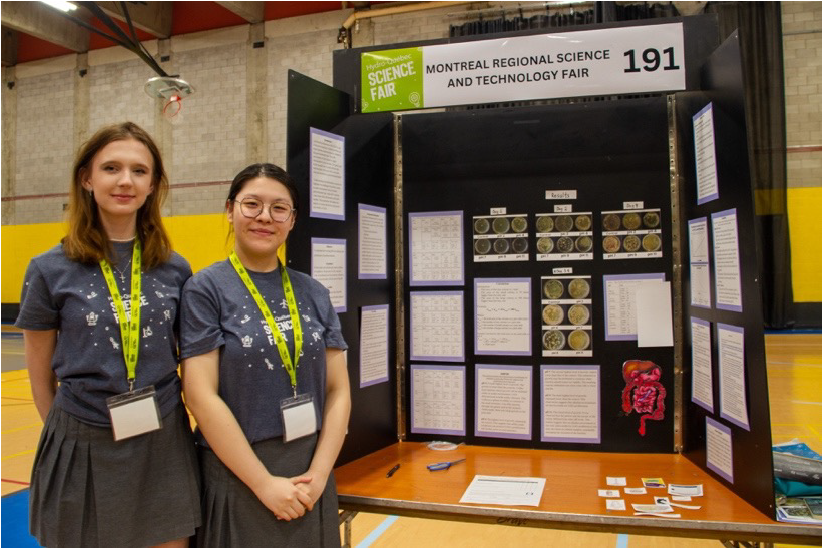
In this project, we focused on investigating the influence of various pH solutions on the proliferation and viability of a probiotic strain, called Lactobacillus Rhamnosus GG(LGG). We monitored the growth of LGG in acidic, neutral and alkaline environments for 4 days. The texture, size and colour of the colonies for each pH level were recorded and the total area of growth were calculated using the data. There were a few interesting findings in our analysis. First, the optimal pH growth for LGG is around pH 4 and the minimal amount is at pH 11. This suggests that a mildly acidic environment is ideal to promote LGG’s proliferation. Next, fungal growth was observed at pH 2, highlighting the potential risks of consuming probiotics.
Our goal was to determine how varying pH levels influence the proliferation of probiotics.
We were curious on how LGG is able to withstand the harsh acidic environments of the stomach and still contribute to our gastrointestinal health. Since gastric acid typically has a very low pH (around 1.5-3.5), most bacteria and probiotics cannot survive in such conditions. We found it interesting that this specific strain of probiotics was able to resist this acidic environment and colonize in the intestines to offer health benefits. Understanding how LGG can overcome this challenge is essential for maximizing probiotic potential, in processes such as food formation.
Our key takeaway from this experiment was the potential risk of getting fungal infection when taking probiotics, since fungal growth was observed at pH 2, which is similar to the acidity found in our stomachs. LGG was able to survive this acidity, but its proliferation has decreased, and the acid-tolerant fungi has appeared. Therefore, it is crucial to be aware when taking probiotic supplements, especially for those with a weak immune system due to the higher risk of infection.
Project: MEDImate
By: Sophie Iny and Sae Ah Park – Grade 11
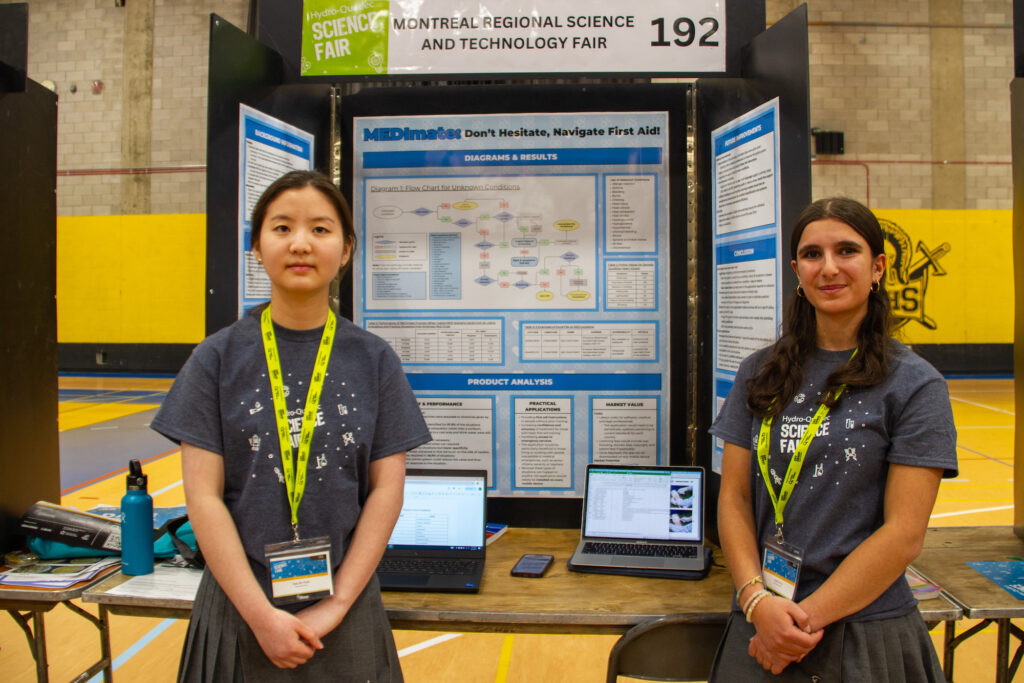
Our project was to develop an app called MEDImate, designed to facilitate navigating emergency and first aid situations for those without prior first aid training. The app provides step-by-step instructions based on simple input and directs the user to call 911 and find nearby AEDs.
Our eventual goal with this project is to work with professionals to deploy this app. We believe it has the potential to make first aid more accessible for anyone, improving outcomes in emergencies.
We chose this topic because a high number of people have no first aid training, and a fast response is crucial in these situations given the long wait times for ambulances. We believe that first aid needs to be more accessible, and that having first aid training is a lot less common than even we previously thought. To implement our application in society, we would like to work with professionals and organizations such as Heart & Stroke and Fondation Jacques-de-Champlain.
The results for Montreal Regional Science Fair are as follows
Honorable mentions
Emmanuelle Etienne-KriefDistinction certificates
Nara Norouzi and Jade RappGreat distinction certificates
Clara Attalah and Bella Flanz
Seokhyun Kwon and Sumin Woo
Qianyu Wang and Anna Maria Romanishyna
Dylan Miao and Daniel Peretz
Shah Sparsh Nishit and Charles ChakiHighest distinction certificates
Alexa Cipriani and Jake Gurevitch
Sae Ah Park and Sophie InyThe prestige awards which includes bursaries were as follows
1) Order of Chemists of Quebec Award
Qianyu Wang and Anna Maria Romanishyna2) Marianopolis College Science Award
Seokhyun Kwon and Sumin Woo3) John Abbott College Science Award
Sophie Iny and Sae Ah Park4) McGill University Awards
- Electrical and Computer Engineering
Alexa Cipriani and Jake Gurevitch
- Faculty of Science Biology Award
Qianyu Wang and Anna Maria Romanishyna
- Faculty of Chemistry Award
Seokhyun Kwon and Sumin Woo
- Faculty of Science Award
Clara Attalah and Bella Flanz
5) Concordia Awards
- Faculty of Engineering and Computer Science – Electrical Engineering Award
Shah Sparsh Nishit and Charles Chaki
Finally, Sae Ah Park and Sophie Iny, placed in the top 15 projects overall, and were selected to go to the Quebec Provincial Fair.
It’s also worth mentioning that Cassidy and Lauren Engo won a number of Cegep level awards, and the top overall project at the college level.

